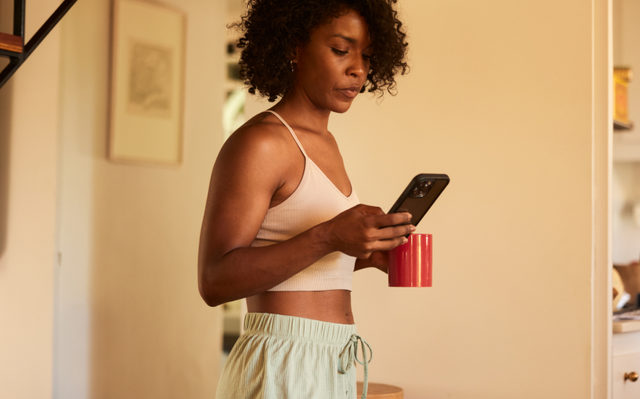Heavy flow, low mood, short fuse, really high libido. Welcome to five minutes in the body of a period person. We’re not being dramatic here, the hormonal shifts that occur during menstruation can feel like emotional whiplash, influencing everything from our appetite to our thought process. But what if we told you there was a way to harness your hormones’ power for the better, rather than succumbing to them? It’s called cycle syncing and it’s got the internet’s attention. Here’s what it's all about.
What is cycle syncing?
Cycle syncing is when you adapt your lifestyle habits like diet or workout routine to align with each phase your menstrual cycle. In doing so, you may become more in-tune with your hormonal needs and better manage your cycle and self.
Consider it a weather tracker for your hormones; a means of checking in with how your body is feeling and preparing accordingly so you can go about your day before finding yourself caught in an emotional fire storm you didn’t ask for.
What’s the science behind it?
We know hormones fluctuate during our monthly cycle, impacting our body’s response to an insurmountable number of things from appetite to libido, but an early study took this idea further by recording the various points women’s moods and body’s change in accordance with each stage of their menstrual cycle. In the study, women reported higher levels of well-being and self-esteem in the middle of the cycle, and increased feelings of anxiety, depression, and hostility before their period. This research inspired Functional Nutritionist Alisa Vitti HHC, AADP, who coined and trademarked the term.
While scientific research of today doesn’t support cycle syncing, the idea is increasingly popular amongst women and some healthcare professionals, who have reported overwhelming positive changes since adopting the theory.
Why it’s popular.
Most of us can relate to the idea of not feeling 100 per cent during or before our period, so any non-invasive measure that can help us to feel better or at least, retain some sense of control as our body changes, sounds pretty good, particularly if you’re prone to fatigue, Polycystic Ovary Syndrome (PCOS), fatigue, weight fluctuation and low libido.
How to start.
The key to cycle syncing is understanding your cycle, its 4 key phases (follicular, ovulatory, luteal and menstrual) and how you feel during each one, making period apps your new BFF.
Start by tracking your cycle each calendar month, recording your mood and any bodily changes accordingly. Apps like Clue and Kindara have cycle syncing theory built in, so you can understand your menstrual data, uncover patterns (like when during your energy is at its lowest), helping you make changes to your lifestyle as needed.
Here’s a general guideline on how you might adapt your lifestyle when you start cycle syncing. (pssst: in cycle syncing, your menstrual cycle is considered the fourth stage).
The 4 Key Phases
Phase: Follicular
Feeling: Not vibing sex. Low energy.
Doing: Eating kimchi and fermented foods to stabilise estrogen levels. Light exercise.
Wearing: Modibodi Swim, for time in the pool, plus our OG Moisture wicking undies for everyday protection and light exercise.
Phase: Ovulation
Feeling: Estrogen is through the roof. Needing sex. Now
Doing: Eating anti-inflammatory foods, wearing protection or trying for that baby.
Wearing: Going commando around the house, or our classic Moisture Wicking undies, perfect for everyday wear and light discharge.
Phase: Luteal
Feeling: High estrogen & progesterone levels. Difficulty climaxing.
Doing: Lots of foreplay. Strength training. Eating leafy greens and magnesium-rich foods.
Wearing: Modibodi x PUMA Seamfree Thong. No VPL. perfect for the squat rack.
Phase: Menstrual
Feeling: Low energy. Heavy bleeding. Cramps, High estrogen levels. Increased libido.
Doing: Light stretching and couch time. Avoiding salty, rich foods.
Wearing: Modibodi Sensual Hi Waist Bikini, perfect for sleeping.
It can take a minute to get your head around cycle syncing, but once you take the time to understand your cycle, making small, lifestyle adjustments can mean the difference between feeling meh and magic. For more info on menstrual and ovarian cycles, check out these blogs.
Disclaimer: Nothing contained in this site is intended to be used as medical advice and it is not intended to be used to diagnose, treat, cure or prevent any disease, nor should it be used for therapeutic purposes or as a substitute for your own health professional's advice. Always consult a doctor and healthcare professional before trying.






